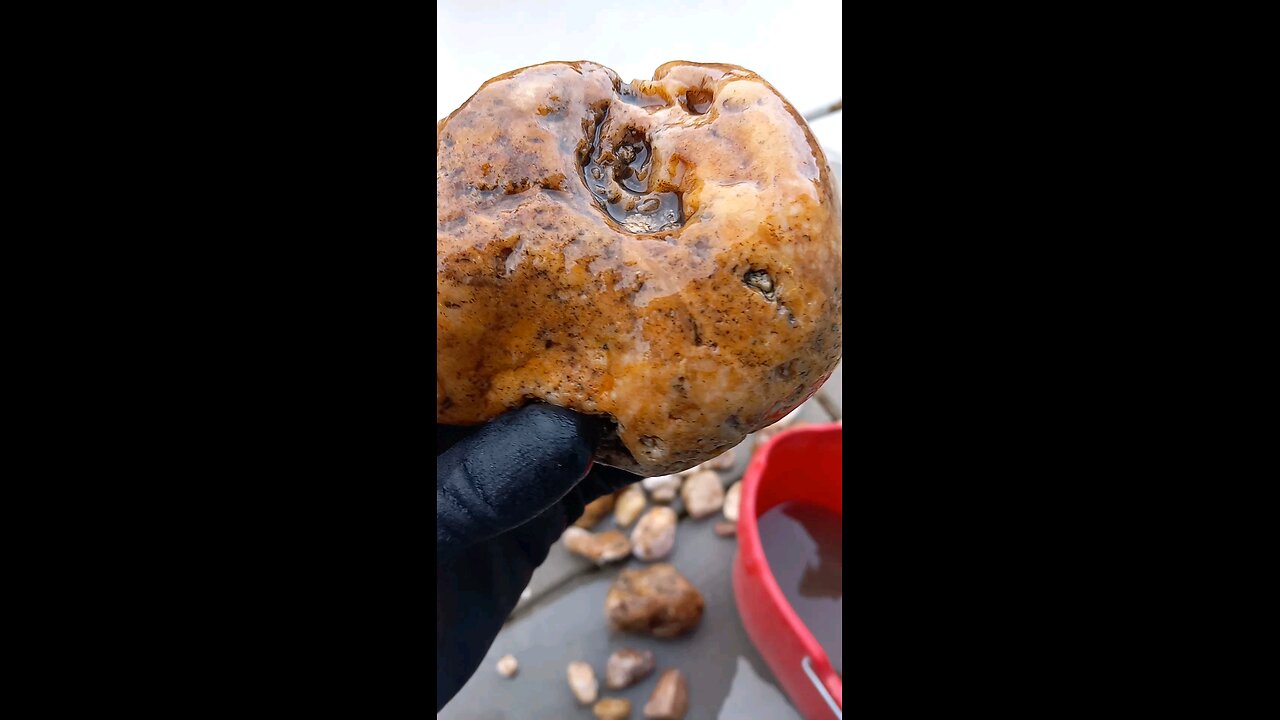Premium Only Content

Now that's a big gash!
This rock appears to be an agate nodule. Here are some key points about agate nodules: -
**Agate**: Agates are a type of chalcedony, which is a form of quartz. They are known for their beautiful banding and are found in a variety of colors. -
**Nodule**: A nodule is a rounded or irregular mass of mineral material, often formed within cavities or fractures in rocks. Agate nodules typically form in volcanic rocks or in sedimentary layers. -
**Appearance**: The nodule in the image shows a rough, unpolished exterior with potential banding or color variations inside. Agates often have layers of different colors or translucent bands when cut open. -
**Formation**: Agates form through the deposition of silica from groundwater in cavities, often in volcanic rocks. The silica fills the cavity layer by layer, creating the characteristic banding. -
**Usage**: Agates are popular in jewelry and as decorative stones due to their hardness (around 7 on the Mohs scale) and attractive patterns. -
**Cutting and Polishing**: To reveal the internal beauty, it might need to be cut and polished. This often requires specialized equipment like a rock saw and a tumbler. -
**Identification**: For precise identification, consider the location where it was found, as agates from different regions can have unique characteristics. -
**Value**: The value of an agate nodule can vary. Some are quite common, while others, especially those with unique patterns or colors, can be more valuable. -
**Geological Interest**: Agates are fascinating for their geological history and the processes that form them, making them a subject of interest for both collectors and geologists. If you're looking to learn more or possibly work with this nodule, consulting with a gemologist or joining a rockhounding community could provide further insights and guidance.
-
 2:01:46
2:01:46
vivafrei
5 hours agoEp. 254: China to Pay $24 BILLION? Who Owns Embryos? Tulsi was RIGHT on Syria! Prorogation & MORE!
102K70 -
 3:40:55
3:40:55
MyronGainesX
15 hours ago $11.08 earnedFormer Fed Explains Gabby Petito's Murder
40.9K14 -
 2:18:05
2:18:05
Nerdrotic
5 hours ago $6.56 earnedInvestigations into the Unknown with Micah Hanks | Forbidden Frontier #093
48.2K16 -
 18:54
18:54
The Rubin Report
9 hours agoHow One Woman Outsmarted Pornhub & Exposed Its Dark Secrets | Laila Mickelwait
111K92 -
 LIVE
LIVE
Major League Fishing
5 days agoLIVE! - Bass Pro Tour: Stage 3 - Day 4
616 watching -
 1:05:28
1:05:28
Sports Wars
12 hours agoLebron GOES OFF Over Bronny Hate, Pereira LOSES Belt To Ankalaev At UFC 313, Xavier Worthy Arrested
86.7K10 -
 10:27
10:27
Tactical Advisor
1 day agoDMR or SPR for Civilian Use?
88.3K6 -
 8:21
8:21
DEADBUGsays
1 day agoThe Crossbow Killer
85.8K13 -
 8:40
8:40
Tundra Tactical
1 day ago $12.47 earnedThe Executive Order Wishlist.
93.2K6 -
 7:22:52
7:22:52
SpartakusLIVE
1 day agoSaturday SPARTOON Solos to Start || Duos w/ StevieT Later
178K4